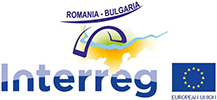Objectives
Main project objective:
To create within the structure of emergency authorities from the cross-border area, a joint rapid intervention force to CBRN emergencies on the Danube river.
Relying on unification of efforts and coordination of resources, the project is a real, cross-border, joint action of authorities, meant to address a short-come of the emergency system from the cross-border area, with respect to its reaction and recovery capacity in case of CBRN emergencies on the Danube river.
Expected results:
The project will create a highly specialized cross-border structure and will put in place tools and expertise that will provide for rapid and comprehensive management of CBRN emergencies, on the Danube river.
The project will provide emergency authorities with state-of-the art technical means for detection and characterization and containment of contaminants, along with rescue facilities, so the quality of response and recovery on the Danube will be enhanced.
On-water intervention unit - 3 rapid, fully equipped CBRN boats and 40 trained operational personnel (for Romanian GIES).
On-land support unit - 5 fully equipped specialized CBRN mobile platforms and 160 trained operational personnel (for Bulgarian DG FSCP-MoI).
Multi-analyses SEM equipment for NIMPS’s regional environmental forensic laboratory, RENFLAB.
Partnership and protocols for operationalization.
Rapid CBRN boat
The boat has very different technical capabilities compared to common sailing boats. The CBRN boat should be able to climb when needed on the stones of the river shore, without being damaged. Due to its special construction material and shape as well as to the accessories included in the configuration, the boat can operate even when in winter when ice start to form.
The boat is equipped with dedicated equipment for chemical-biological-radioactive materials detection and safety equipment and with an on-board cabin for crew transport and accommodation.
Apart from CBRN equipment the boat is equipt with an innovative system for material cutting and firefighting , dedicated to complex intervention on water (ships, barges) but also on shores (warehoused, harbors).
CBRN equipped containers
The CBRN container is a local intervention module, rapidly deployable to the site of a CBRN event. It is a compact field laboratory that contains all necessary capabilities to address all type of situations that may occur during a CBRN intervention, in terms of detection of chemical-biological-radioactive materials on site and also containment of pollutants with specific absorbent barriers.
Specialized mobile CBRN platform
Specialized mobile CBRN platforms are power machinery that will provide for fast deployment of CBRN equipped containers to the emergency site. Tier 1 and Tier2 platforms will ensure access of intervention teams in any weather conditions and even through inaccessible terrain. The Tier 1 platform will be mid-range M (7.5-14 T) , category 2 vehicle. The Tier 2 platform will be a heavy-duty, off road tracked carrier with payload of about 7T.
High resolution SE-EBS-EDX microscope
A scanning electron microscope will be purchased and become part of the new laboratory dedicated to environment forensics. The tool will complement the existing capabilities of the host institution ensuring the capabilities to analyze a multitude of samples of various nature. It will offer the capability of determining the morphology of various samples at microscopic level (resolution at nanometer level) with ease and in a very short time.
An energy dispersive X ray microanalysis accessory will be employed to determine the elemental composition of samples. Practically the instrument will allow further addition of accessories, modern scanning electron microscopes being the swiss army knife of modern laboratories. As an example, some nanoparticles tend to be considered threats to human health or environment safety and a scanning electron microscope will be the fastest way to determine simultaneously parameters such as size, shape and composition of such nanostructures.


